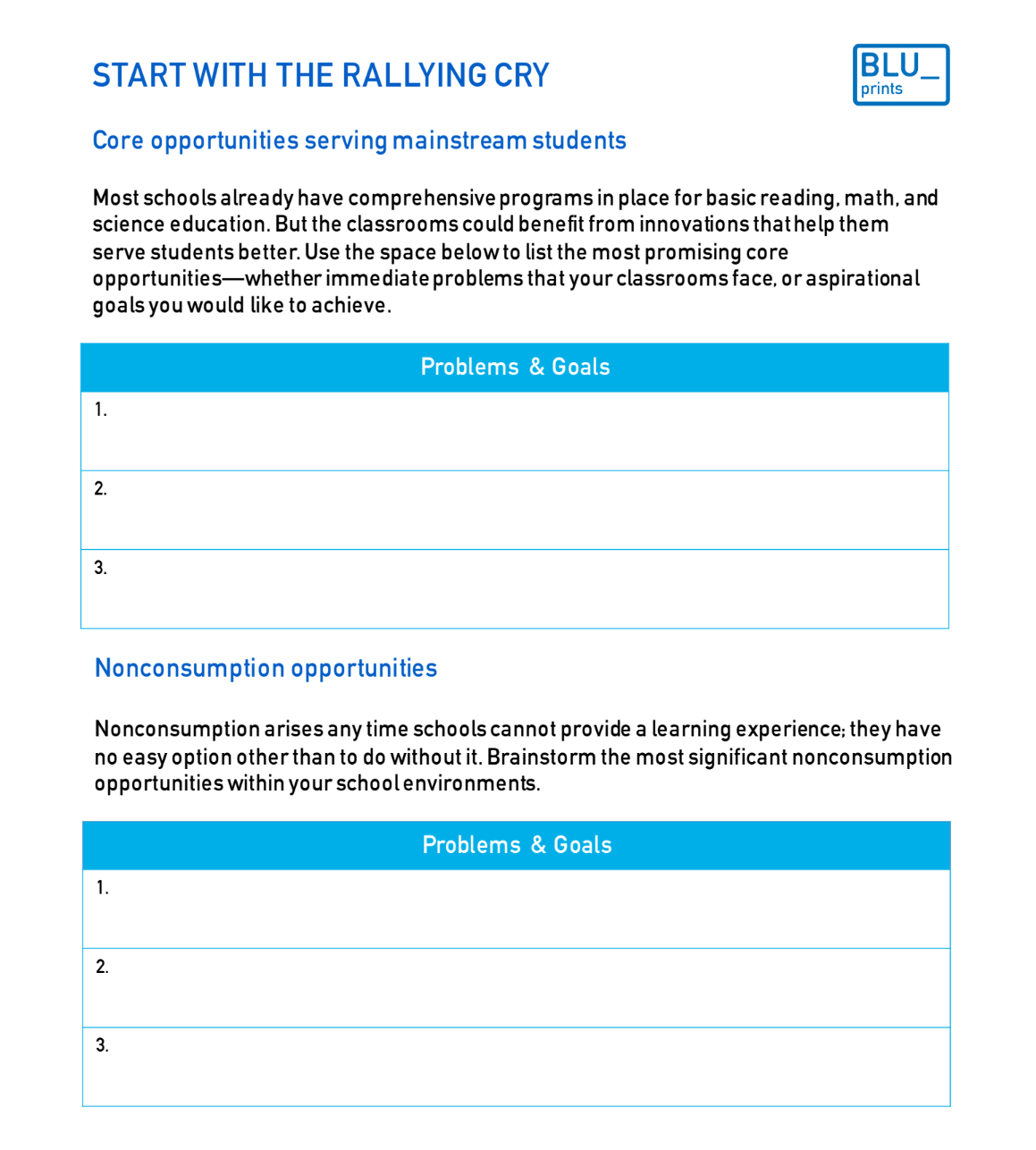Start with a
rallying cry
Identify the problem to solve or the goal to achieve.

Start with a rallying cry
1
Begin with a defined problem or goal.
It’s tempting, but don’t lead with technology considerations. The most successful blended programs begin generally in response to a desire to (1) boost student achievement and quality of life through personalization, (2) provide access to out-of-reach courses and opportunities, (3) improve a school system’s financial health, or (4) a combination of all three.
2
Make your goals SMART
Specific, Measurable, Actionable, Realistic, and Time-Related. Does it target a specific area for improvement? Does it quantify or at least suggest an indicator of progress? Who will be responsible? Can results be achieved realistically, given available resources? When can the results be achieved?
3
Separate core problems from nonconsumption problems.
Core problems affect mainstream students and teachers in core tested subjects. Addressing these problems often improves the traditional system without transforming it entirely. Nonconsumption problems exist when schools can’t provide a learning experience and have no easy option other than to do without. Solving nonconsumption problems offers ways to experiment with how to move beyond the traditional, factory model. Distinguishing the type of problem will help you clarify the opportunities.
QT
Quick
Tip:
Nonconsumption can be found in many settings. Consider students who want to take a specific elective or advanced course not offered by the school, students with schedules that prohibit them from attending certain classes, or students who have dropped out.
FROM THE FIELD: Miami-Dade County Public Schools
The nation’s fourth-largest school district located in Miami, FL, identified a nonconsumption opportunity when it found itself short of the number of teachers it would need to ensure that eight thousand high school students had access to the courses they needed stay on track for on-time graduation. View Miami-Dade’s profile in the BLU School Directory.
 Previous: REFINE & ITERATE
Previous: REFINE & ITERATE 
